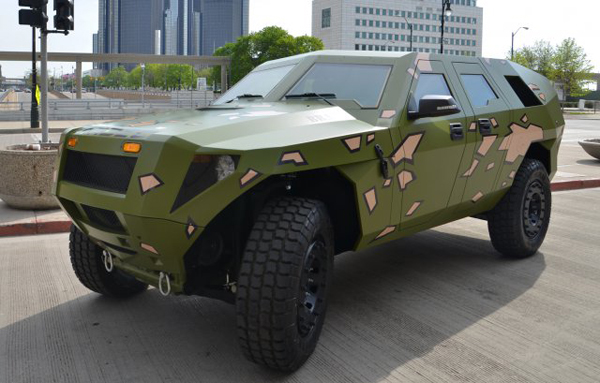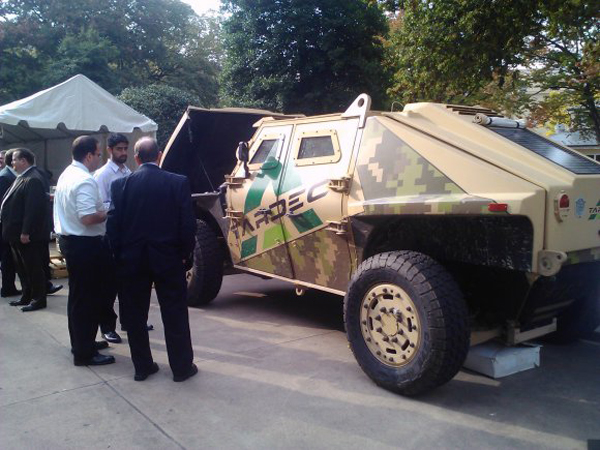The idea that the U.S. military can somehow green itself into a more energy efficient operation is something which has peaked the interest of EarthTechling readers for sometime. One of our more popular stories of late focused on a hybrid armored personnel carrier under development by BAE Systems and Northrup Grumman. Now comes word the U.S. Army has unleashed FED Bravo, a concept vehicle said to not only have great fuel economy, but also be able to generate electricity for soldiers in the field.
The Army unveiled FED Bravo, also known as Fuel Efficient Demonstrator (Bravo version), at the end of April at the Society of Automotive Engineers 2012 World Congress. The military vehicle makes use of a road coupled, parallel hybrid drive system, with the front axle being powered by an electric motor, while the rear-wheel drive is linked to a hybrid fuel-powered and electric system. Under the hood is a Ford 4.4-liter twin turbocharged V8 diesel engine capable of producing 268 hp.

Besides other features such as an integrated starter-generator that shuts off the engine during idle time and an advanced lithium-ion battery, FED Bravo is designed to work with a small TM3 microgrid system through which the vehicle could provide power for field operations. A very thick National Renewable Energy Laboratory report [PDF] on the use of clean technologies in the military indicates multiple TM3s (TM3-PS) could even be be connected to condition and distribute larger levels of power for small forward operating bases.
CarBuzz notes FED Bravo gets “8.2 mpg city and 14.2 mpg highway, not too shabby for a vehicle carrying a weight of 16,760 lbs.” It was designed as a collaboration between students at the College for Creative Studies, or CCS, in Detroit, engineers at the Army’s Tank Automotive Research, Development and Engineering Center in Warren, Michigan and industry partner World Technical Services. The students who worked on this project were tasked with meeting what the Army said were specific “requirements for fuel economy, performance, protection, payload and interior layout.”
The FED program, which already produced an Alpha vehicle version last fall that was said to be fuel-efficient, but could not export power like the Bravo version, is a push by the Army to develop future vehicles that reduce fuel consumption while “maintaining tactical vehicle performance.” The first generation Alpha, seen below, has all the capabilities of an up-armored Humvee, but burns about 70 percent less fuel.

The Army took what it calls a Monster Garage approach [PDF] to the development of the Bravo vehicle, “mobilizing specialists from each area of vehicle design and engineering to brainstorm the best possible energy-efficient solutions.” An original one-fifth scale model — clad in a camouflage pattern — was designed by student Joel Zastrow from CCS, and went on public display for the first time at the North American International Auto Show (NAIAS) in Detroit in January.
“I had a lot of little military vehicles, and I would pretend to drive them around the house,” said Zastrow. “I’m also fascinated by fighter jets, especially the F-22 Raptor and F-117 Stealth. I definitely used them as inspiration for the FED Bravo vehicle.”